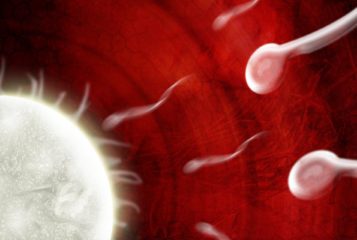A high level of twin, triplet and other multiple births in the USA may be down to a rise in fertility treatments like ovarian stimulation being used independently of IVF.
A study from the Centers for Disease Control and Prevention (CDC) and Brown University calculated that in 2011 over a third of twin births and three quarters of other multiple births in the USA were the result of fertility treatments of all kinds.
'We do have a real problem with way too many multiple births in the United States with consequences to both mothers and babies', said Professor Eli Adashi, the study's lead author. These consequences are primarily health-related, the study states, but in the USA can also include spiralling hospital bills.
For the research, scientists monitored the rates of multiple births between 1962 and 1966, before any fertility treatments were available, and rates between 1971 and 2011. As expected, the overall rate of multiple births increased between these two periods, almost doubling from 1.8 percent of total live births in 1971 to 3.5 percent in 2011.
IVF treatments are often immediately considered responsible for the increase in multiple births, as multiple embryos can be implanted simultaneously in a bid to improve the chances of successful pregnancies. To see if this really was the underlying cause, the researchers used data on multiple births collected by the CDC and estimated the proportions of multiple births attributable to IVF or non-IVF fertility treatments.
They found that the incidence of triplet and higher-order multiple births resulting from IVF has in fact fallen steadily since 1998, when guidelines came into force recommending that no more than three embryos be implanted.
By contrast, multiple birth rates due to non-IVF fertility treatments have grown, outstripping IVF treatments in recent years. The authors estimate that 45 percent of triplets and higher-order multiple births were due to non-IVF treatments, compared to 32 percent attributable to IVF.
'We were surprised that non-IVF approaches were more culpable than IVF here', Professor Adashi told CNN.
While efforts to reduce the multiple birth rate resulting from IVF appear to have been successful, treatments such as ovarian stimulation, which often result in multiple eggs being released in a single cycle, may be more difficult to control.
But, Professor Adashi continued: 'There are clearly ways by which these non-IVF technologies can be modified and there are more prudent approaches that result in less in the way of multiples'.
Discussing the findings on CBS News, Professor Nanette Santoro of the University of Colorado, who was not involved in the study, said it was 'very easy to demonise this dumb doctor who didn't do the right thing. That may not always be the case. Frustrated people who don't get pregnant after a couple cycles will think more is better. It's the American way'.





Leave a Reply
You must be logged in to post a comment.